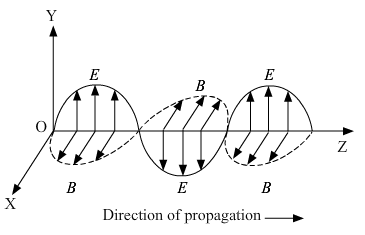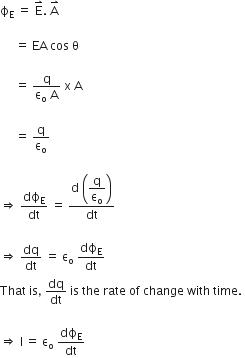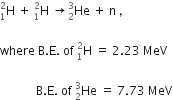 Short Answer Type
Short Answer Type , where
, where  is the electric flux produced during charging of the capacitor plates.
is the electric flux produced during charging of the capacitor plates.
A moving charge produces both electric and magnetic fields, and an oscillating charge produces oscillating magnetic and electric fields. These oscillating electric and magnetic fields with respect to space and time produce electromagnetic waves.
The propagation of electromagnetic waves can be shown as:
OR
Maxwell's generalization of ampere's circuital law given by,
Consider that a parallel capacitor C is charging in a circuit.
The magnitude of electric field between the two plates will be,  , is perpendicular to the surface of the plate.
, is perpendicular to the surface of the plate.
Electric flux through the surface will be, 
Explain the terms (i) Attenuation and (ii) Demodulation used in Communication System.
 , where V is the is accelerating potential for two particles A and B, carrying the same charge but different masses m1 and m2 (m1 > m2). Which one of the two represents a particle of smaller mass and why?
, where V is the is accelerating potential for two particles A and B, carrying the same charge but different masses m1 and m2 (m1 > m2). Which one of the two represents a particle of smaller mass and why? 
(a) Explain any two factors that justify the need of modulating a low-frequency signal.
(b) Write two advantages of frequency modulation over amplitude modulation.
